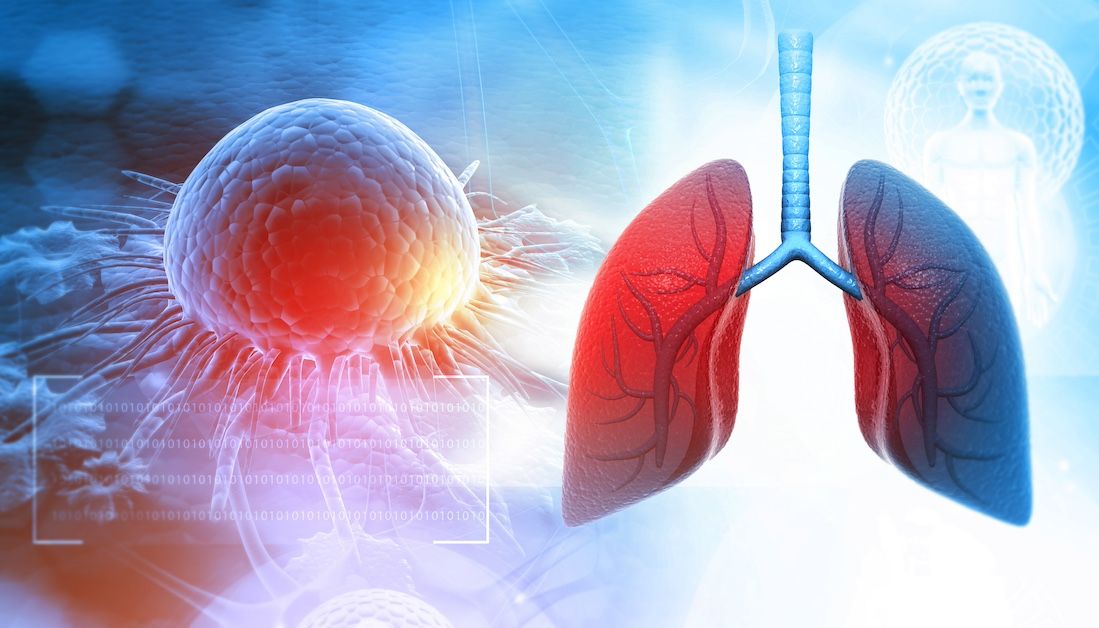Article
Tumor-Associated Autoantibodies Demonstrate Promise as Immunotherapy Biomarkers in NSCLC
Author(s):
The development of 2 panels measuring levels of tumor-associated autoantibodies (TAAbs) has promise for predicting therapeutic response and adverse events for patients with advanced non–small cell lung cancer (NSCLC) after immune checkpoint inhibitor–based treatment.
Levels of tumor-associated autoantibodies (TAAbs), measured in panels developed by the researchers of a study published in Thoracic Cancer, were found to have promising results in predicting response to therapy and adverse events for patients with non–small cell lung cancer (NSCLC).
The authors of this single-center, retrospective study aimed to develop 2 TAAb panels that would be able to effectively predict the effectiveness and toxicity of immune checkpoint inhibitor (ICI)–based treatment for patients with advanced NSCLC. The study was conducted in Peking Union Medical College Hospital in Beijing, China.
Patients were enrolled in this study from July 2017 to September 2020 if they had been diagnosed with advanced NSCLC during this period. Patients were excluded if they had autoimmune diseases, had active multiple primary malignancies, had received other immunotherapy, or were receiving immune-suppressive agents.
All participants had 10 mL of their blood collected for the study. The reactivity of the TAAbs was determined using enzyme-linked immunosorbent assay (ELISA). There were 35 purified tumor-associated antigens that were expressed and purified and had the patient plasma samples added to them after incubation to allow the TAAbs to bind to the TAAs.
Progression-free survival (PFS) of ICI-based treatment was the primary end point, and overall response rate (ORR) and incidence rate of immune-related adverse events (irAEs) were the secondary end points.
There were 97 patients that were enrolled in this study who had advanced NSCLC and received ICI-based treatment; patients were split into a discovery cohort (n = 48) and a validation cohort (n = 49). The TAAb positivity rates were 72.9% and 73.9% in the 2 groups, respectively. There were also 43 patients included who had a driver gene mutation, 20 of whom were included in the discovery cohort.
Investigators screened the serum levels of the 35 TAAbs to help identify the TAAb panel that had the best predictive value. TAAbs that did not have a positive case were excluded. The median PFS (mPFS) was evaluated and TAAbs associated with an mPFS of less than 4 months were excluded. A 7-TAAb panel was selected for use in this study as it had an association with a better PFS.
The serum level of the 7 TAAbs was measured in the validation cohort and had a positive rate of 38.8%, which was similar to the discovery cohort. Longer PFS was also associated with this 7-TAAb panel (mPFS, 11.1 vs 4.8 months; P = .015). Positivity in the 7-TAAb panel was found to be a predictor of PFS in a Cox regression analysis, as patients had a 0.417-fold increased risk of disease progression after an ICI-based treatment when patients had positive results compared with patients with negative results. Patients with a positive result also had better prognosis compared with negative patients through a longer PFS (mPFS, 10.9 vs 4.3 months; P = .001) and a higher ORR (36% vs 23%).
The researchers also found that the 7-TAAb panel was a good biomarker in patients treated with ICI and chemotherapy (mPFS, 17.0 vs 5.8 months; P = .065). Among patients who received subsequent-line ICI treatment, those with positive 7-TAAb panel results had significantly longer PFS compared with patients with negative results (mPFS, 9.9 vs 3.4 months; P = .004), with a similar but nonsignificant trend found in patients who had first-line ICI treatment (mPFS, 17.0 vs 10.0 months; P = .115).
A positive result in the 7-TAAb panel was associated with longer PFS in patients without driver mutations (mPFS, 11.1 vs 3.7 months; P = .011), as well as those with driver mutations (mPFS, 8.4 vs 5.8 months; P = .071).
The researchers also developed a 4-TAAb panel to predict the occurrence of irAEs and found that the risk of irAEs after immunotherapy was significantly higher in patients with positive results compared with those with negative results (71.43% vs 28.91%; P = .0046).
The researchers concluded that the 2 TAAb panels that they developed were capable of predicting therapeutic response and irAEs in patients with advanced NSCLC who had taken ICI-based treatment. These panels could therefore be used as immunotherapy biomarkers, they wrote.
Reference
Zhao J, Wu Y, Yue Y, et al. The development of a tumor-associated autoantibodies panel to predict clinical outcomes for immune checkpoint inhibitor-based treatment in patients with advanced non-small-cell lung cancer. Thorac Cancer. Published online January 2, 2023. doi:10.1111/1759-7714.14772

Insufficient Data, Disparities Plague Lung Cancer Risk Factor Documentation




